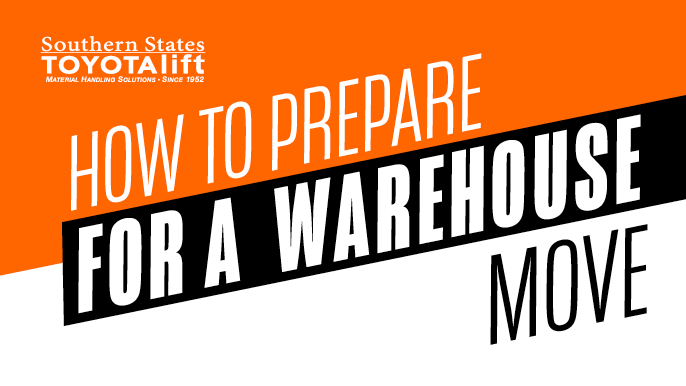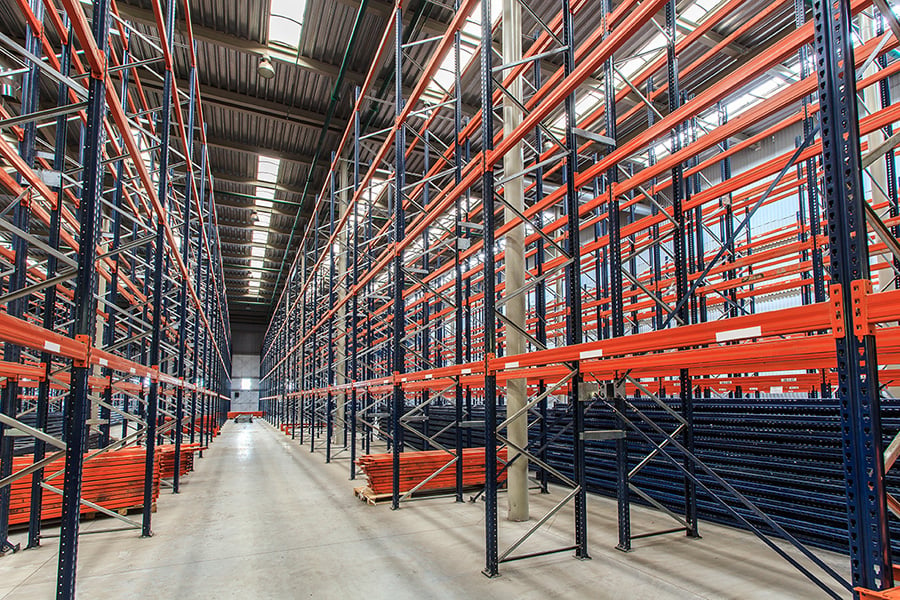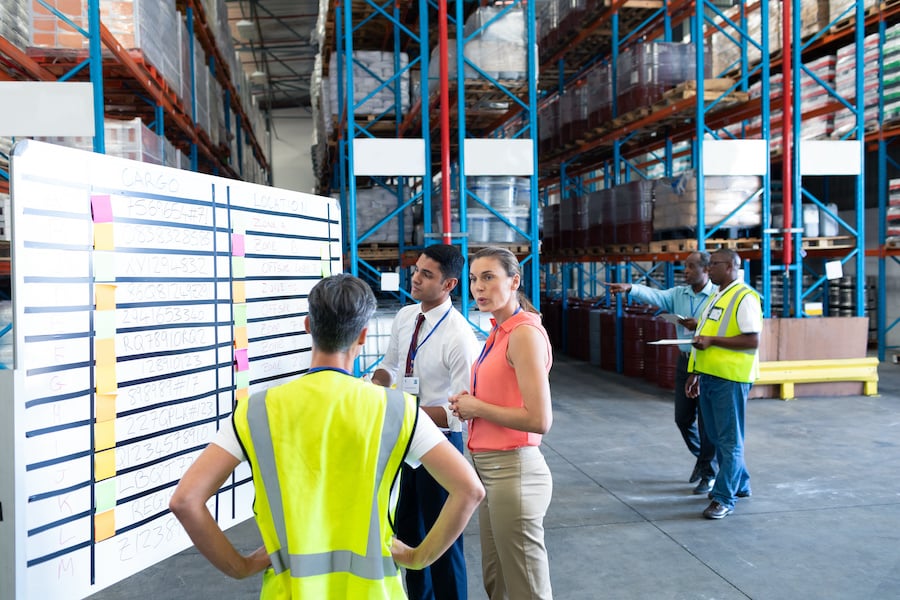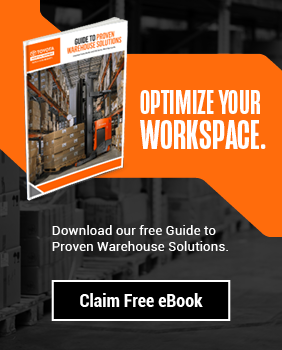How to Prepare for a Warehouse Move
by Brian Gilliam, on Aug 4, 2023 2:54:00 PM

When done right, a warehouse move can help your operation slough off inefficiencies and position itself for growth. When done wrong, there can be unnecessary overtime, misplaced or inaccurate inventory and a lot of finger pointing.
The tips below can help your warehouse move go as smoothly as possible. We’ve also created a warehouse relocation checklist you can customize to meet your needs.
Before we dig in, here’s a quick question: Are you relocating because you’ve run out of room in your existing facility? If so, consider these alternatives first.
If you're locked in to the idea of starting over in a new space, keep reading.
Start With a Warehouse Transition Plan
A detailed warehouse transition plan is the key to success. It's also the best way to avoid common problems such as:
- Move-in delays
- Inventory problems
- Staffing issues
- An overblown budget
Develop a 3- 6 Month Plan
Your transition should start at least three months before you walk away from your existing space. Six months is preferred, especially if you plan to install automation, a WMS or any other technology.
Build Your Team
No one should have to plan a warehouse move alone. There are many details to consider including:
- Designing a new layout
- Permits
- Optimizing inventory
- Staffing and overtime
- Minimizing downtime
- Not to mention the move itself
Asking just one or two people to handle the move on top of their existing duties is a BIG ask. It’s also a big risk. What if the person who's been overseeing everything leaves? As you read through the warehouse relocation checklist below, start a list of people who can take responsibility for various tasks.
You can also get expert advice – FREE!
As part of our commitment to helping local businesses be more successful, we offer free consultations. Our team can help you prepare for the move, design a layout for your new location and inspect your pallet rack. Just tell us what you need help with.

Warehouse Relocation Checklist
1. Identify Inefficiencies in Your Current Operation
Don’t bring old inefficiencies to your new facility. Work with team members to identify problem areas in your existing setup.
For example, products that were once popular may now be slow-moving SKUs – but they’re still in a central location. Optimize your picking process by reshuffling inventory locations. The more you can find ways to reduce travel time and handling in your new facility, the more the hassle of moving will seem worth it.
Pro Tip: Don’t forget to factor in how operational needs may change during peak periods.
2. Discuss Ways to Futureproof Your Business
Moving to a new facility is the ideal time to add new technology and ensure your operation stays competitive. For example, in 2023 only 20% of warehouses use automation, but this is changing rapidly. Exploring options like warehouse automation before you move costs nothing. But playing catch up and adding new technology once your old systems are in place is considerably more expensive.
Free Warehouse Optimization Guide
Our free guide will walk you through the process of planning and designing your warehouse to ensure it’s as efficient as possible. Whether building a new space or updating your existing one, our Warehouse Optimization Guide will help you make your business more profitable.
3. Test Drive Your New Layout
Once you’ve decided what goes where in your new space, show different team members a map and ask them to “test drive” the arrangement. Have them imagine their day-to-day in the new space using the map. This exercise will help you uncover any weaknesses in your new plan and ensure you have sufficient room for staging, equipment charging, etc.
During this process, do your best to stay open-minded. You’ve likely put a lot of work into this design, and you’re going to get some knucklehead requests like: can you move the bathrooms over here? No. But you’ll also get a few gems, such as: we want to take advantage of incentives to buy electric equipment; do we have the infrastructure to charge two additional trucks?
4. Choose Whether or Not to Reuse Your Pallet Rack
This may seem like an odd question. Why not use the pallet rack you’ve already paid for? A few reasons:
- If you want your existing facility to stay operational until the last possible moment, you’ll need that rack in place
- Your existing rack might not be the right height for your new space (don’t forget about sprinkler clearance!)
- Dismantling and reinstalling rack requires exceptional attention to detail
A new warehouse racking system can both improve efficiency and give you the flexibility to expand down the road. We can help you choose the best option for your business as part of our free consultation.
Prefer to keep your existing pallet rack? Ask us about pallet rack removal and relocation. Our seasoned experts will make the teardown and moving process painless as possible. We’ll also inspect your pallet rack for signs of damage and repair it when necessary – ensuring your warehouse rack is strong and safe.
5. Book a moving company
Reserve dates with a company that can move your inventory and equipment as soon as possible. Don’t delay. These operations can be booked out months in advance.
Pro Tip: divide your new facility up into zones. As the move date approaches, label each pallet with the zone it belongs to in addition to the SKU and quantity. This will make loading and unloading much faster.
6. Optimize Inventory
To minimize moving costs, keep inventory as lean as possible and pare down what you have on hand.
- Liquidate slow-moving inventory. Have you ever moved homes and had one or two boxes that you never unpacked? You probably wondered, “Why did I bother to bring this stuff?” When moving an entire warehouse, that’s an expensive mistake.
- Have new shipments sent directly to your new facility.
7. Prepare Your Team and Budget for Overtime
Overtime isn’t an inevitability, but it’s something to budget for. One of the best ways to avoid overtime is to work closely with team leaders to plan what needs to be done:
- Week-by-week in the months leading up to the move
- Day-by-day as the move date approaches
Pro Tip: Have a contingency plan if key personnel get sick or become injured. Make sure everyone has a backup.
Lastly, ensure all team members have keys or access cards for the new facility. I know that seems obvious, but it’s a mistake that’s been known to happen.

8. Communicate Your Moving Plan Early and Often
The last thing you want is a delayed shipment because someone wasn’t aware you moved. Make sure delivery drivers, suppliers and vendors are aware of your new address and the move date.
- Post flyers at your loading dock, in the lobby, anywhere non-staff members might be.
- Use old billing statements to create a list of online accounts that need to be updated.
- Update websites (including your own) where your address information may be published and business pages such as Google, Facebook, LinkedIn, etc.
9. Check Your Repair Clause Before Shutting Off Utilities
Before scheduling a cut-off date with utility providers, allow time for your repair or clean up crew to do what they need to do.
Your Warehouse Relocation Partner
We hope the information in this article has been helpful. At Southern States Toyotalift, our goal is to help local businesses be more successful. That’s why we offer:
- Free Design Consulting and Facility Audits
- Pallet Rack Relocation and Removal
- System Engineering and more
Contact us online, by phone at (800) 226-2345 or in person at one of our eleven locations throughout Georgia and Florida.
FLORIDA
Jacksonville
Lakeland
Ocala
Orlando
Tampa
Winter Haven
GEORGIA
Albany
Macon
Midland
Valdosta
Further Reading:
Need More Warehouse Space? Don't Move, Do This First
Proven Ways to Optimize Your Warehouse – Free Download
Is It Okay To Mix Pallet Rack From Different Manufacturers?
Warehouse Automation – Is It Right for You?










